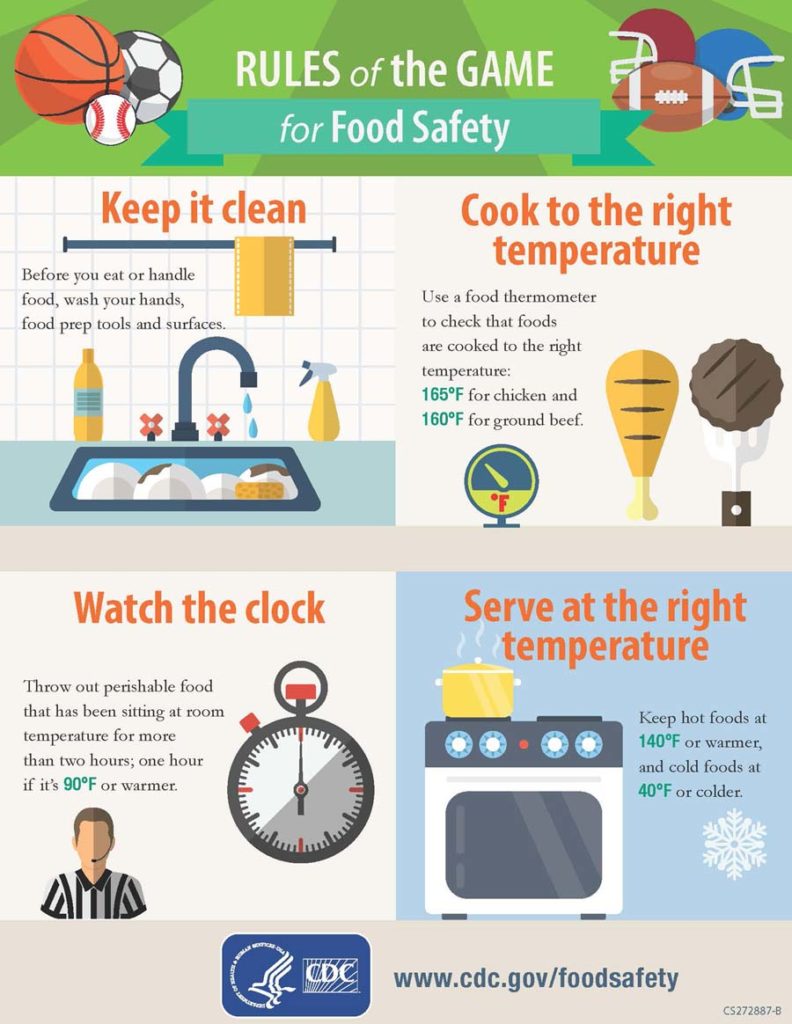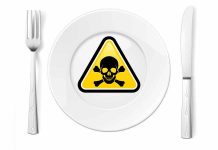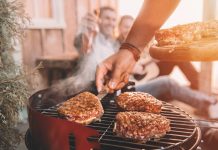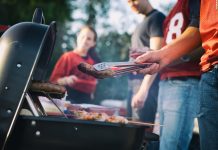Who’s ready for tailgating season! What’s better than cheering on your favorite team with your friends and a grill cooking food?
Tailgating is a die-hard tradition and a custom for many college, university, and pro football fans.
Regardless of the weather or team record, a game is incomplete without having a party and celebrating outside the stadium while food cooks on a grill.
But, because tailgate parties are an all-day food grilling and feast, there is an increased risk of foodborne illness.
Cooking outdoors presents a food safety challenge. Not not only does bacteria multiply faster in warmer temperatures, but preparing food outdoors makes safe food handling more challenging.
Every good tailgate party starts with a good game plan. Make sure to follow proper food safety principles and procedures – so you and your friends can enjoy the game – rather than becoming ill.
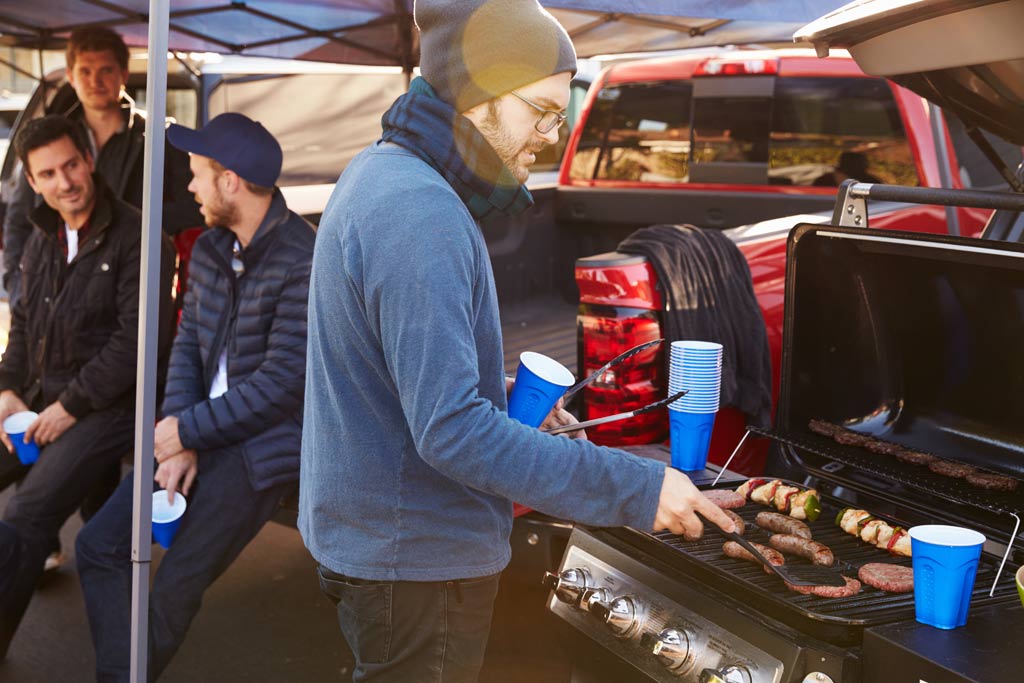
Preparation: Packing Food Safely for Transport
Here are some general rules for keeping food safe when traveling:
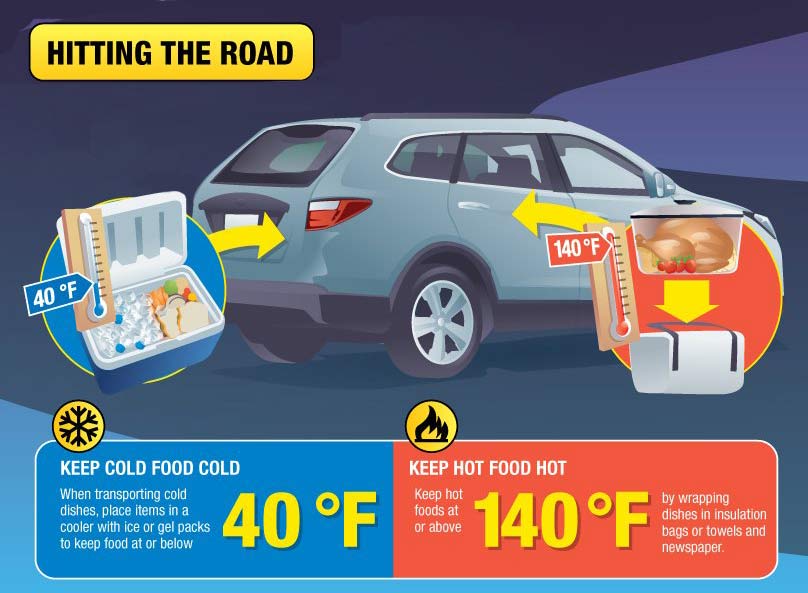
Plan Ahead. If you are traveling with perishable food, place it in a cooler with ice or freezer packs. When carrying drinks, consider packing them in a separate cooler so the food cooler is not opened frequently. Have plenty of ice or frozen gel-packs on hand before starting to pack food.
If you take perishable foods along (for example, meat, poultry, eggs, and salads) for eating on the road or to cook at your vacation spot, plan to keep everything on ice in your cooler. Wash produce before-hand, including those with inedible skins and rinds.
- Learn about cross contamination, cold and hot food safety, best practices for personal hygiene, and foodborne illnesses.
- Food Manager ANSI Certification: SALE $99.00 - Valid in all States
- Food Handler ANSI Training for only $7.00!
- 10% OFF SALE: Enter Promo "TRAIN10OFF" at Checkout
Pack Safely. Pack perishable foods directly from the refrigerator or freezer into the cooler. Meat and poultry may be packed while it is still frozen; in that way it stays colder longer. Also, a full cooler will maintain its cold temperatures longer than one that is partially filled. Be sure to keep raw meat and poultry wrapped separately from cooked foods, or foods meant to be eaten raw such as fruits.
Keep cold food cold. Maintain cold foods, like salsa and guacamole, at 40°F or colder. Use small service trays or nest serving dishes in bowls of ice, replacing ice often.
Keep hot food hot. Hold hot foods at 140°F or warmer. Use chafing dishes, slow cookers, and warming trays to keep food hot on the buffet table.
Consider packing beverages in one cooler and perishable foods in another since you are likely to grab beverages most often.
At the Stadium: Keep it Clean

- Wash your hands with soap and running water (warm or cold) for at least 20 seconds before preparing, eating, and handling food—especially after passing the TV’s germy remote control! Also wash your hands after using the bathroom and touching pets.
- Wash your cutting boards, dishes, utensils, and countertops with hot, soapy water after preparing each food item.
Cook to a Safe Temperature
Use a food thermometer to test party favorites, like chicken wings or ground beef, and any other meat or dishes on your menu.
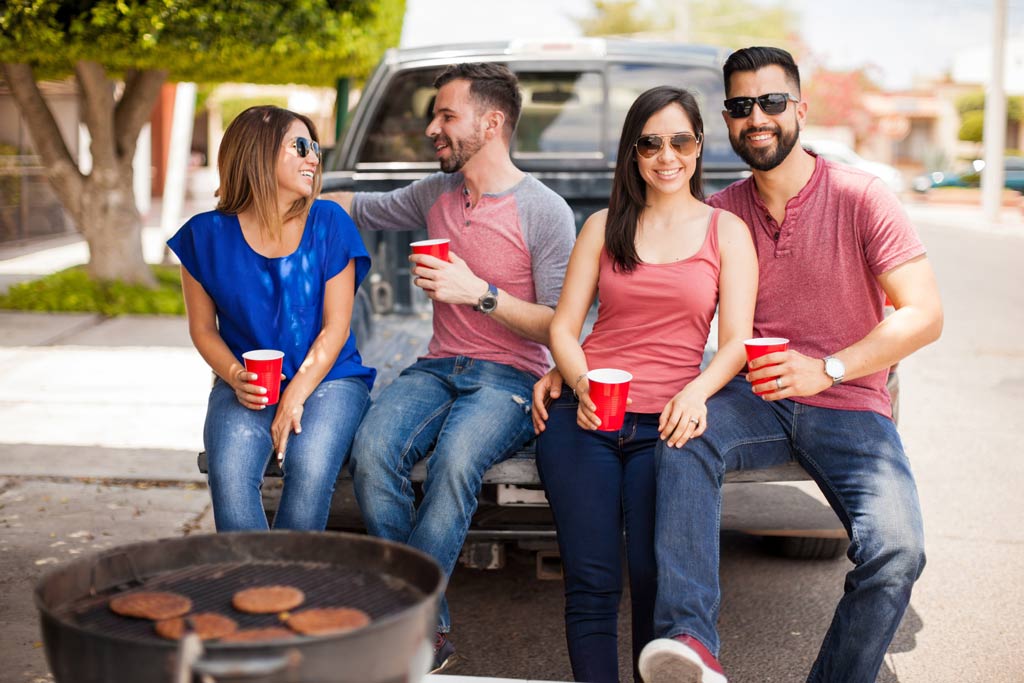
USDA: Safe Minimum Cooking Temperatures
Refer to the chart below for Safe Minimum Cooking Temperatures:
| Category | Food | Temperature (°F) | Rest Time |
|---|---|---|---|
| Ground Meat & Meat Mixtures | Beef, Pork, Veal, Lamb | 160 | None |
| Turkey, Chicken | 165 | None | |
| Fresh Beef, Veal, Lamb | Steaks, roasts, chops | 145 | 3 minutes |
| Poultry | Chicken & Turkey, whole | 165 | None |
| Poultry breasts, roasts | 165 | None | |
| Poultry thighs, legs, wings | 165 | None | |
| Duck & Goose | 165 | None | |
| Stuffing (cooked alone or in bird) | 165 | None | |
| Pork and Ham | Fresh pork | 145 | 3 minutes |
| Fresh ham (raw) | 145 | 3 minutes | |
| Precooked ham (to reheat) | 140 | None | |
| Eggs & Egg Dishes | Eggs | Cook until yolks and white are firm | None |
| Egg dishes | 160 | None | |
| Leftovers & Casseroles | Leftovers | 165 | None |
| Casseroles | 165 | None | |
| Seafood | Fin Fish | 145 or cook until flesh is opaque and separates easily with a fork. | None |
| Shrimp, lobster, and crabs | Cook until flesh is pearly and opaque. | None | |
| Clams, oysters, and mussels | Cook until shells open during cooking. | None | |
| Scallops | Cook until flesh is milky white or opaque and firm. | None |
Watch the Time
Track the time that food stays out. Sideline any perishable foods that have been out at room or outdoor temperature for two hours or more.
Remember, discard any food left out more than 2 hours (1 hour if temperatures are above 90°F).
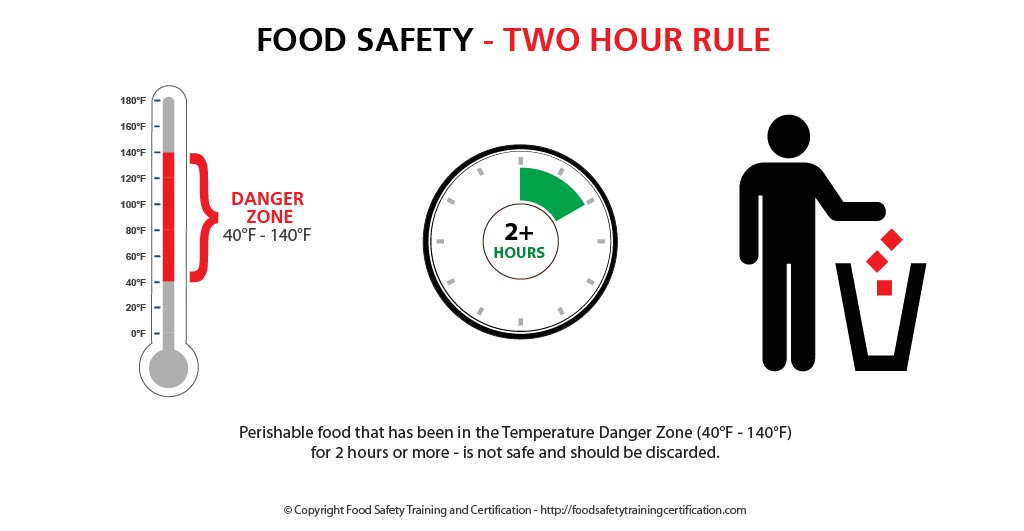
CDC: Sports Tailgating Infographic
